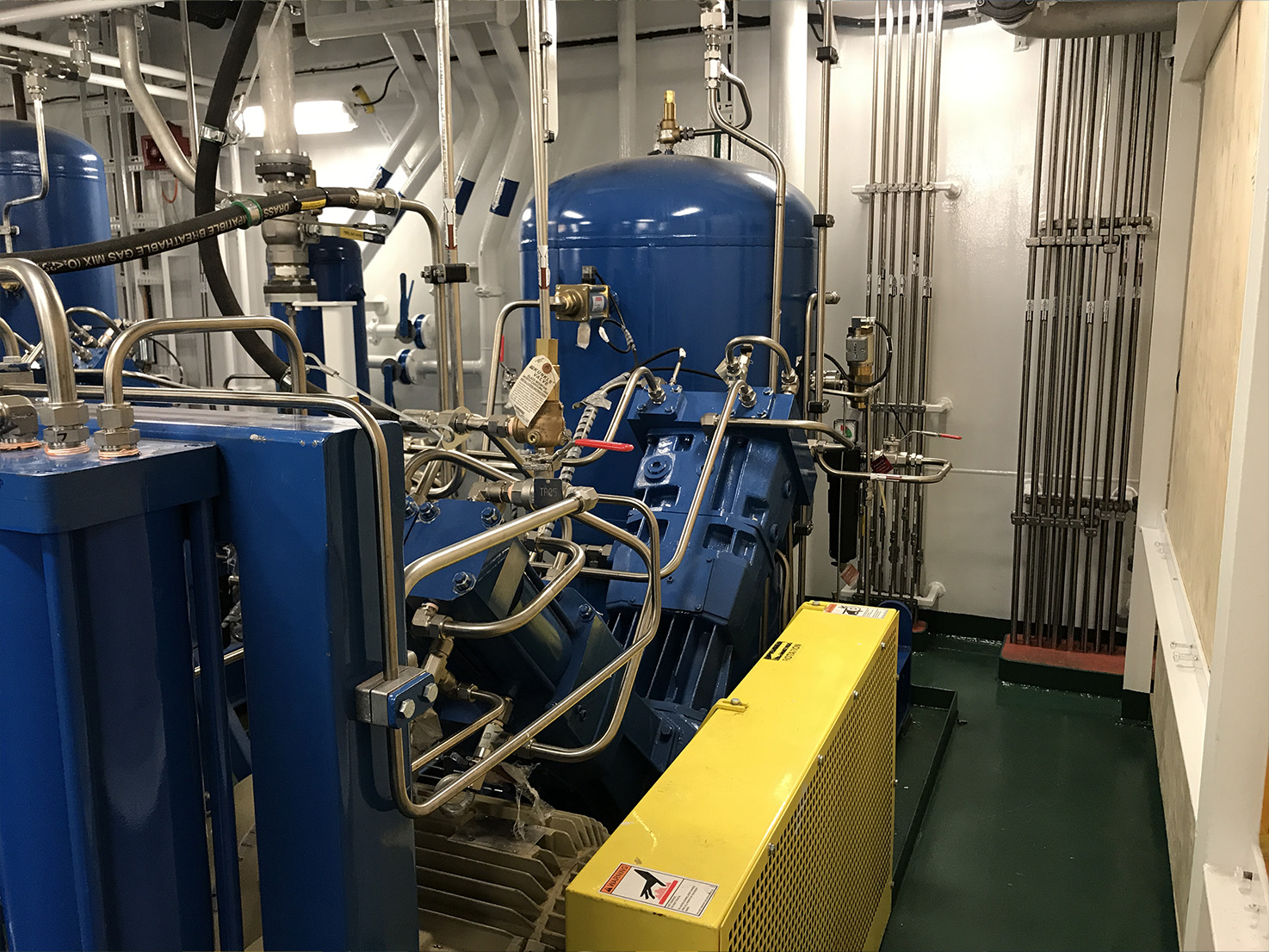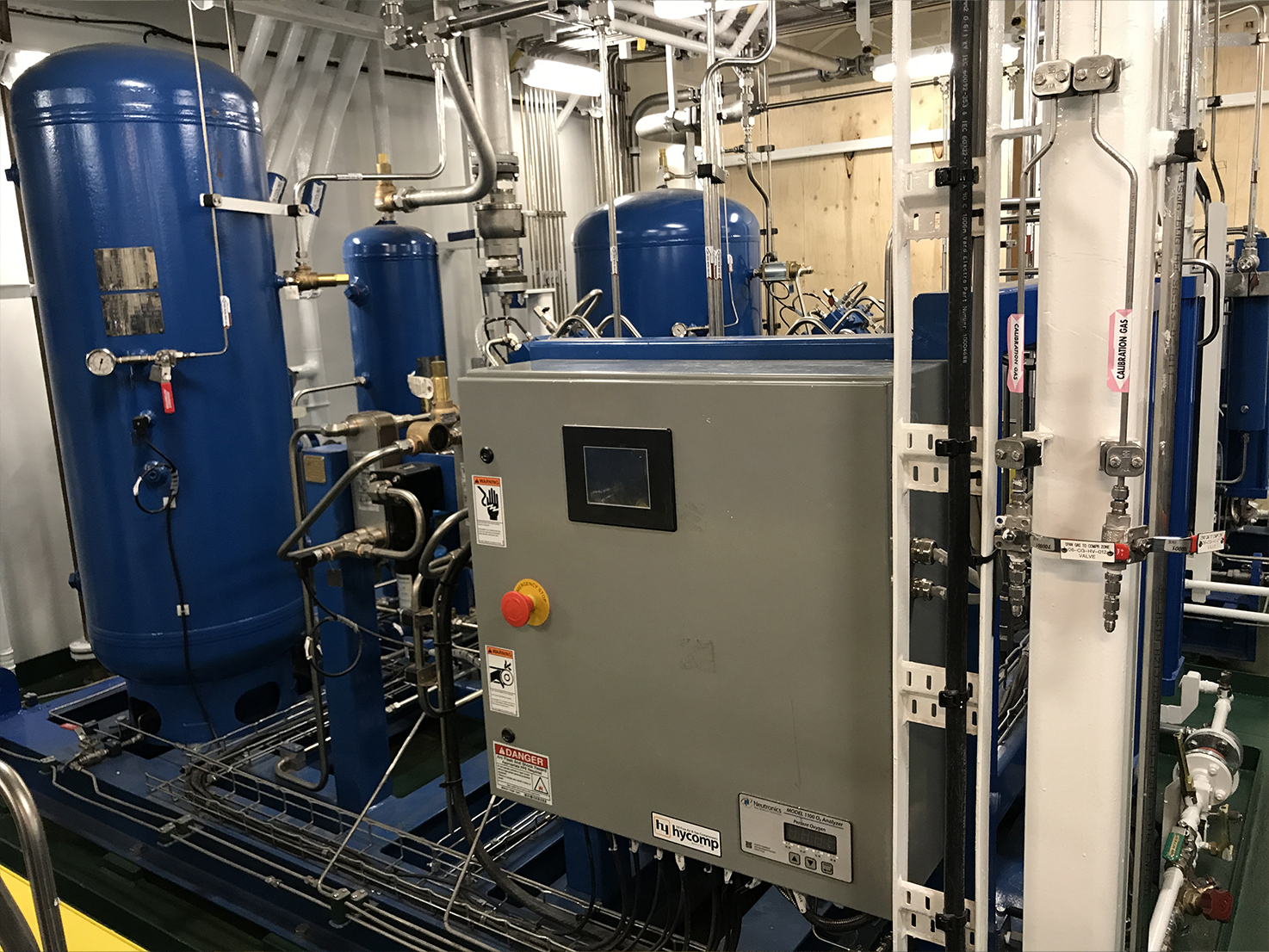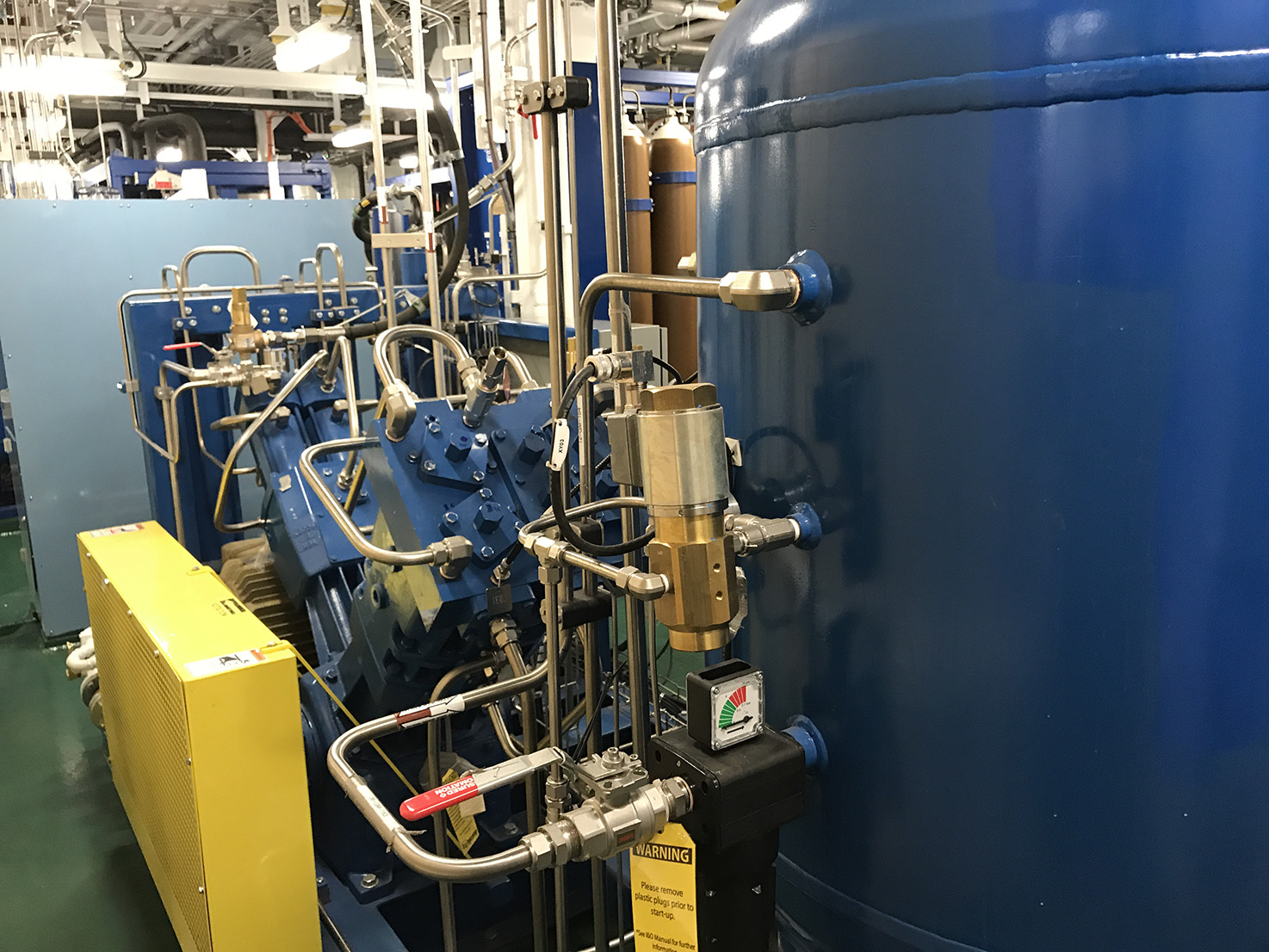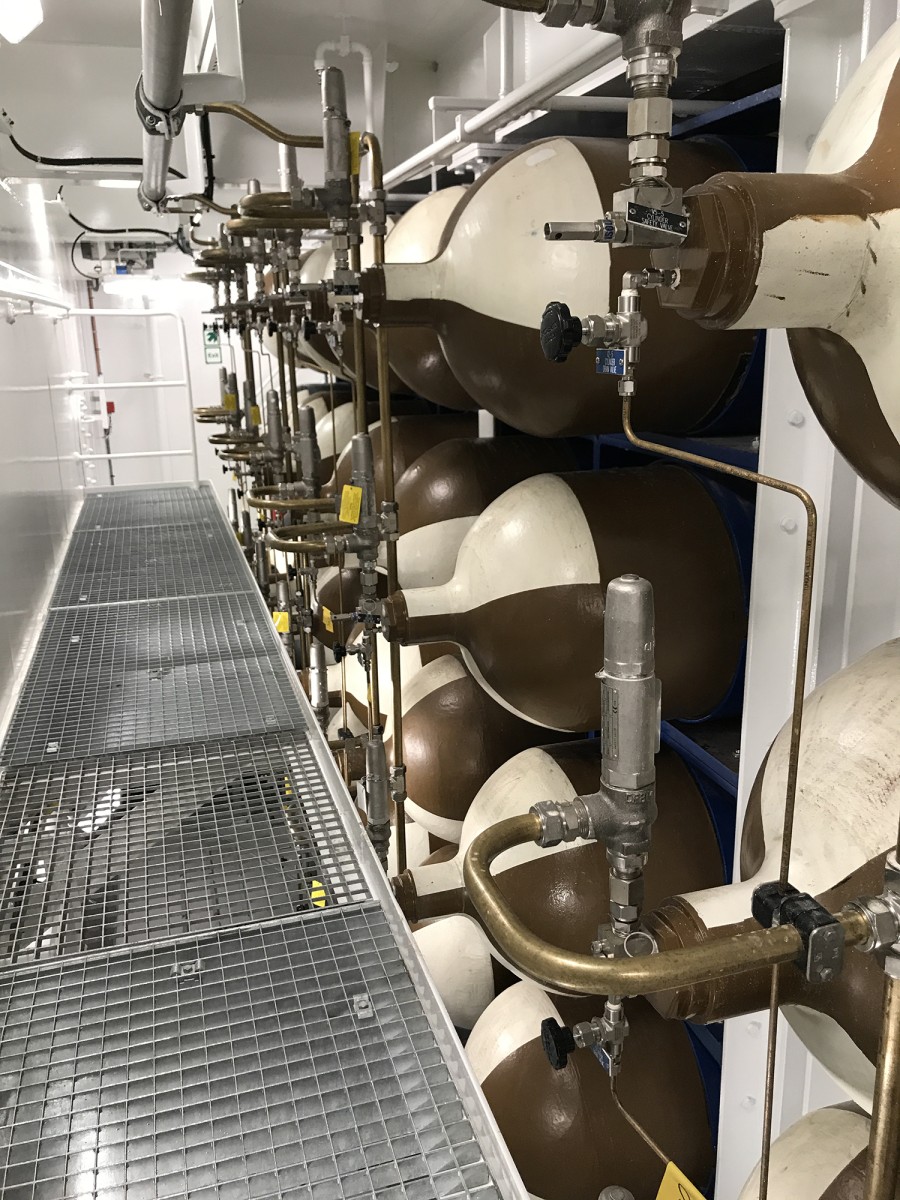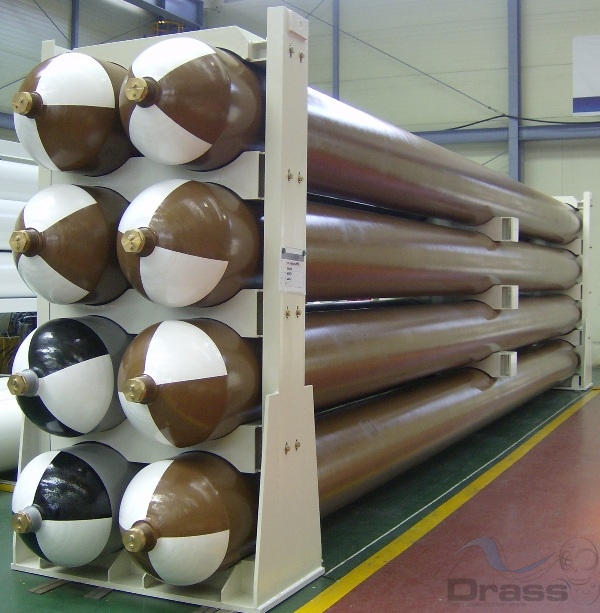Gas reclaim system
recirculation loop of gas breathed by divers
GAS RECLAIM
The Drass Diver Gas Reclaim System is a recirculation loop which allows the complete reclaim of heliox breathed by 2 divers from 17 MSW up to 300 MSW at a flow rate of 35 l/min per diver, with a work of breathing which is within the limits of Norsok U-101.
Higher capacity and depth can be managed in full safety by the system with an acceptable work of breathing. The Diver Reclaim System controls the correct level of pressure in the reclaim loop with an independent and redundant check of O2 and CO2 level. The last downstream check on the Dive Control Console, which is always available, is a further safety step. The system includes automated functions, managed with the required safety level, and a large volume tank in line with DNV OS-E402.
FEATURES
The DRASS Reclaim System stands out as the most modern and high-performing machine on the market. Through dedicated baseline tests, the system’s performance has been fine-tuned to optimize the efficiency of gas reclaim, thereby minimizing the breathing resistance for divers, and ensuring the highest possible reclaim percentage.
This enhanced performance offers significant safety and cost benefits by enabling the reprocessing of the majority of gas used during diving operations. Prioritizing safety and user-friendliness, the gas reclaim system is designed to maximize reclaim percentages across its entire operational range, ultimately reducing gas consumption and lowering the overall cost of diving operations.
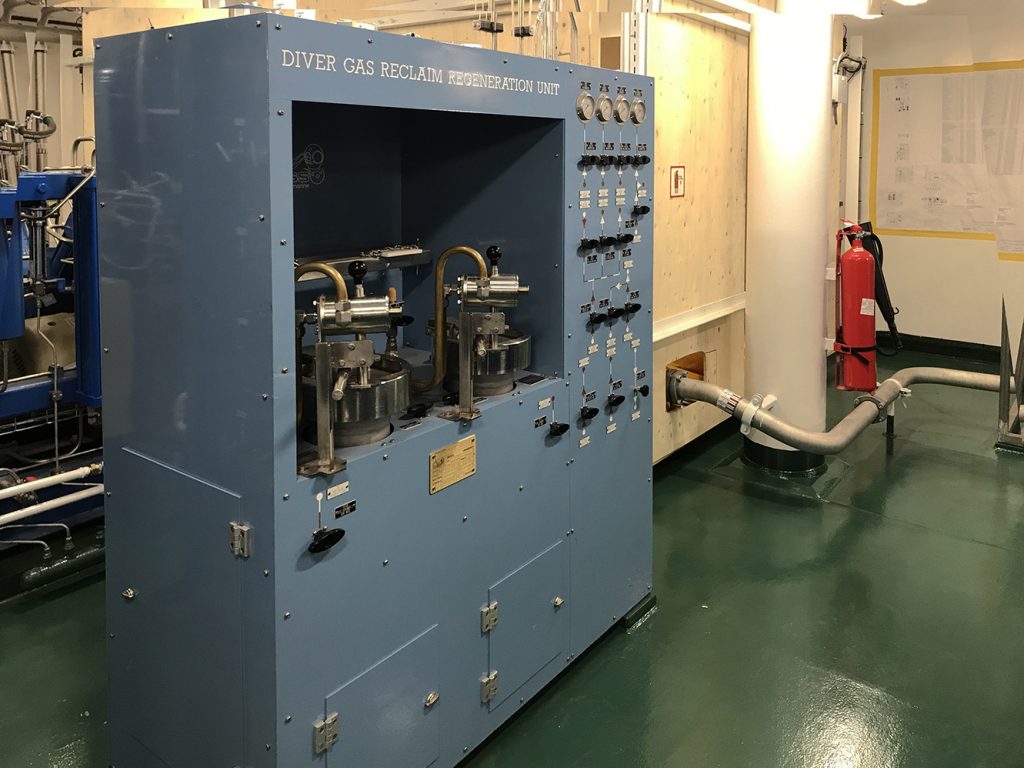
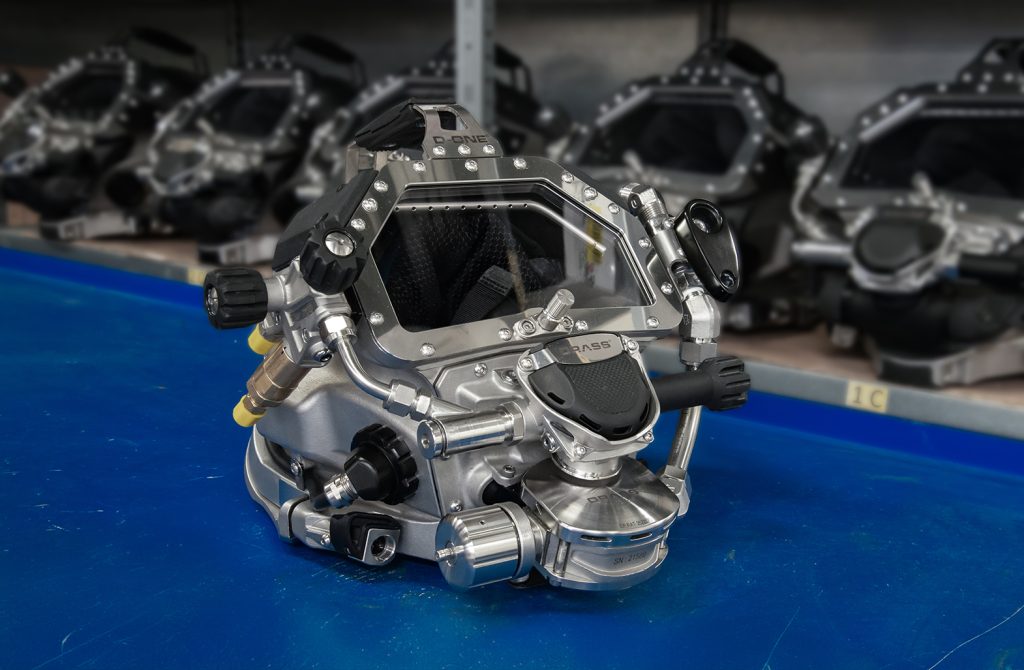
D-one reclaim
The DRASS reclaim system operates seamlessly with the commercially available reclaim equipment and comes equipped with reclaim valves including those integrated on DRASS D-ONE Plus diving helmet.
GAS STORAGE
Gas storage consists of all those structures used to allocate the required volume of gas on the support vessel. It is composed of a set of jumbo gas cylinders (capacity 2.8m³; working pressure 200 bar), and some skids used to support and position them in the proper way on the vessel. Each bottle is supported on its extremities by 2 frames with dedicated locking clamps.
